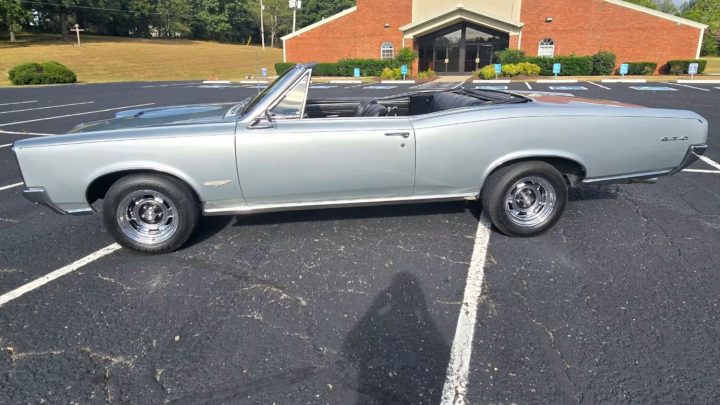The Pontiac GTO was born at GM’s Milford Proving Grounds when John DeLorean and a group of engineers gathered to test a prototype 1964 Pontiac Tempest that had been stuffed with a 389 cubic-inch V8. What resulted was a car that could produce burnouts at will, was hilariously rowdy, and arguably the first muscle car. DeLorean thought this would be the perfect vehicle to chase the youth market.
Pontiac had run into a marketing stonewall when GM, along with all the other American auto manufacturers, signed an agreement to stay out of competitive motorsports. This was born out of the 1955 24 Hours of LeMans tragedy that took the lives of 82 and injured more than 120 others. Before the ink was dry on the agreement, most of the manufacturers began clandestinely supplying racers with cars, parts, and support. In 1963, GM brought their corporate hammer down, ending any and all racing support, clandestine or otherwise. As a result, Pontiac had to find a new way to appeal to the youth market that did not involve organized competition. A high-horsepower factory hot rod was just the ticket. Thus was born the Pontiac GTO.
The Pontiac GTO shouldn’t have been built. The 389 DeLorean and company had installed in the Tempest prototype was strictly forbidden by GM’s own rules that forbid mid-size passenger cars from having engines that displaced more than 330 cubic inches. DeLorean sidestepped the edict by stating engines that were part of optional trim packages were immune. John Z. had to convince Pontiac GM Pete Estes the GTO would sell robustly enough to warrant offering the option package. Estes set a goal of selling 5,000 GTOs. Pontiac only managed to sell 32,450 GTOs in 1964. The Goat was a hit!
The Pontiac GTO option package got you more than just a bigger engine. The 389 was fed by a Carter four-barrel carb, dressed with chrome valve covers, a chrome air cleaner cover, dual exhaust, and a two-speed automatic, three-speed manual, or four-speed manual gearbox. Manual transmissions were equipped with a chrome Hurst shifter (although there was not a Hurst logo on the shifter in 1964, there would be one in 1965, marking the first time an aftermarket supplier’s logo appeared on a GM factory car). The suspension was beefier, with a more robust front sway bar, stiffer springs, and redline rubber wrapped around 7.50 x 14 inch wheels.
For 1966, the Pontiac GTO received a restyling, and became its own model. The GTO had stacked headlights, unique taillights, a wider body, bulging rear fenders, a wider rear track, and a new grille. The GTO came in three different body styles, including a two-door hardtop, two-door post, and a convertible. Hardtop rear windows had a tunneled look. Inside, the GTO featured Strato bucket seats, walnut veneer trim on the dash, and the ignition moved from the left to the right side of the steering wheel.
Our feature 1966 Pontiac GTO convertible is finished in Silvermist Gray with a black vinyl convertible top over a black vinyl interior. It is powered by the matching-numbers 389 cubic-inch V8 backed by a four-speed transmission. Originally an automatic, the manual gearbox was swapped when the car was sold new. The GTO is equipped with triple carburetors, Hurst shifter, Strato bucket seats, console, air induction hood, power brakes, power convertible top, column-mounted auxiliary tachometer, auxiliary gauges, and a Jim Wangers autographed sun visor.
This 1966 Pontiac GTO convertible will cross the Mecum Auctions block at their Indy Fall Special taking place October 3rd through the 5th.


































Comments
Who is Jim Wangers? Never heard of him.
Jim Wagner was one of the guys that developed the GTO. I believe he passes away a few years ago. However, if you ever see some old shows about muscle cars, he was always one of the guys they would interview. He was a wealth of knowledge.
No, Wangers was involved with the advertising agency pushing GTO and maybe other Pontiacs.
More Cars need to be made Strictly in the United States so therefore we would have more Jobs created in the Manufacturing Center . Industry and maybe Oldsmobile and Pontiac would still be in Production. Oldsmobile and Pontiac should still be here cause the Middle Class loved them